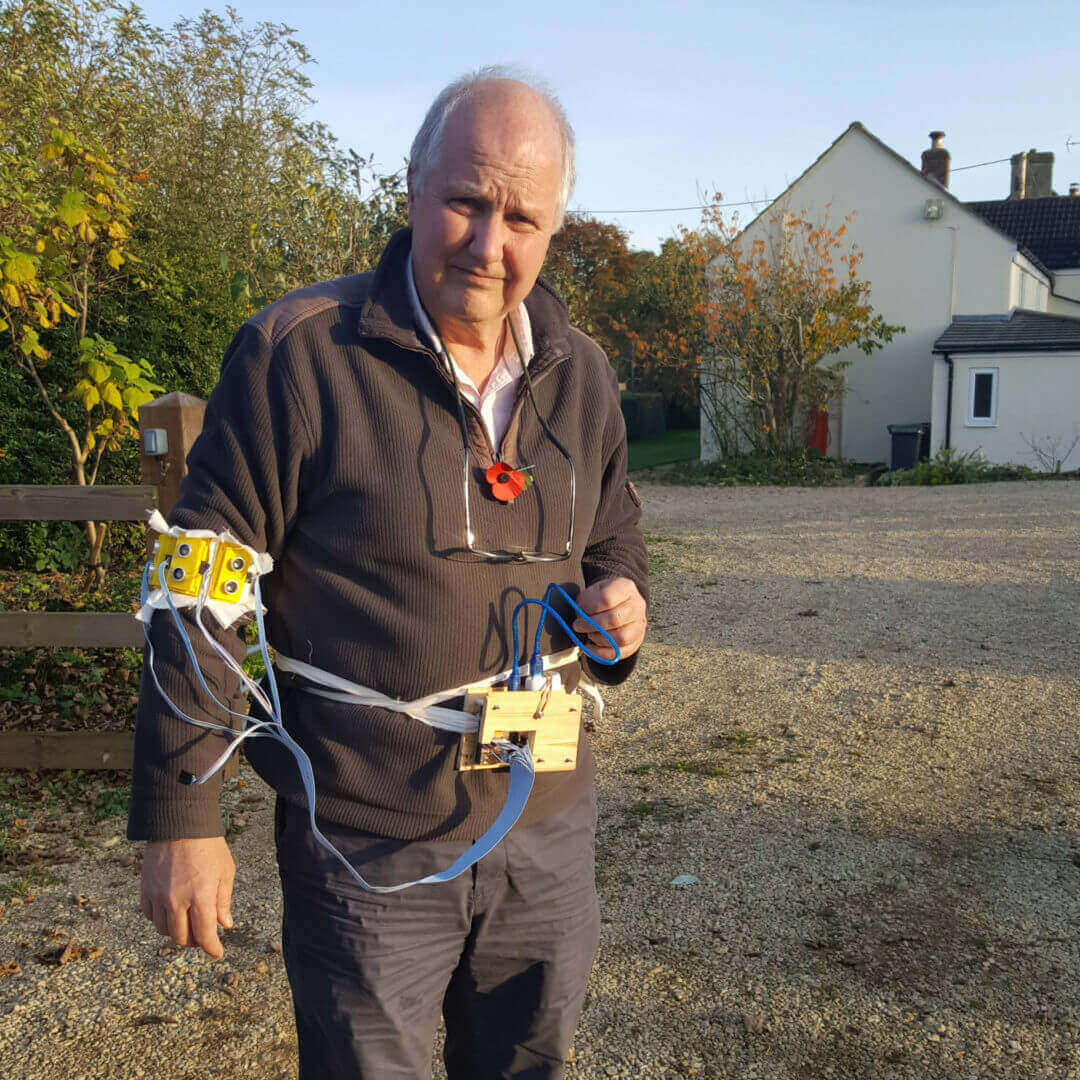RepRap inventor has found a way to let you “feel” distant objects, using a 3D printed rangefinder packed with ultrasonic sensors.
Don’t Miss: The Official History of the RepRap Project
Using ultrasonic sensors embedded in a 3D printed rangefinder and attached to a person’s arm, RepRap pioneer Adrian Bowyer has developed a way to “feel” distant objects.
The concept sounds like something from a science fiction film, but the execution is surprisingly simple and proven to work.
According to the project description on his blog, Bowyer writes:
“The idea is to have a set of rangefinders in armbands that point outwards around your body. Each armband also has vibrators in that vibrate against your skin at an increasing frequency as the range from each sensor gets smaller. The left armband covers your left-side surroundings, and the right your right-side”
The extra senses are coordinated with an Arduino Uno embedded inside a 3D printed shell. When the rangefinder detects a nearby obstruction — like a wall — it triggers a corresponding vibration. This allows someone to sense what is nearby without even seeing or touching it.
Sounds amazing, right? Here’s a video of the 3D printed rangefinder in action:
Potential Applications for 3D Printed Rangefinder
The 3D printed rangefinder has four sensors on one arm. This allows you to feel forwards, backwards and sideways on one side of your body. Adding another identical device to your other arm would give you a full 360 degree range.
Intriguingly, because you can move your arm about, you can also feel upwards and downwards around yourself as well as horizontally.
The armbands were made by directly printing onto strips of fabric. This is an increasingly popular technique in the 3D printing community, as demonstrated by Simone Fontana.
Using this method, Bowyer constructed a case for each ultrasonic sensor together with a holder for the corresponding vibrator in a hole in its base.
The whole unit is powered by a USB battery pack typically used for recharging smartphones. Not only were they compact enough to carry, but they also have enough charge to run the device for over sixteen hours.
So what are the potential applications? One obvious use would be to assist someone with visual-impairment, so they can navigate their environment more safely.
But it could also prove useful in a situation when needing to navigate without the luxury of referring to a map, like when you’re riding a bike. Or in severe weather conditions.
Bowyer has uploaded the entire schematics for the projects to a GitHub repository under a GPL license. Other makers are invited to modify and experiment with the design and improve upon it.

License: The text of "3D Printed Rangefinder with Arduino Adds Extra Senses" by All3DP is licensed under a Creative Commons Attribution 4.0 International License.